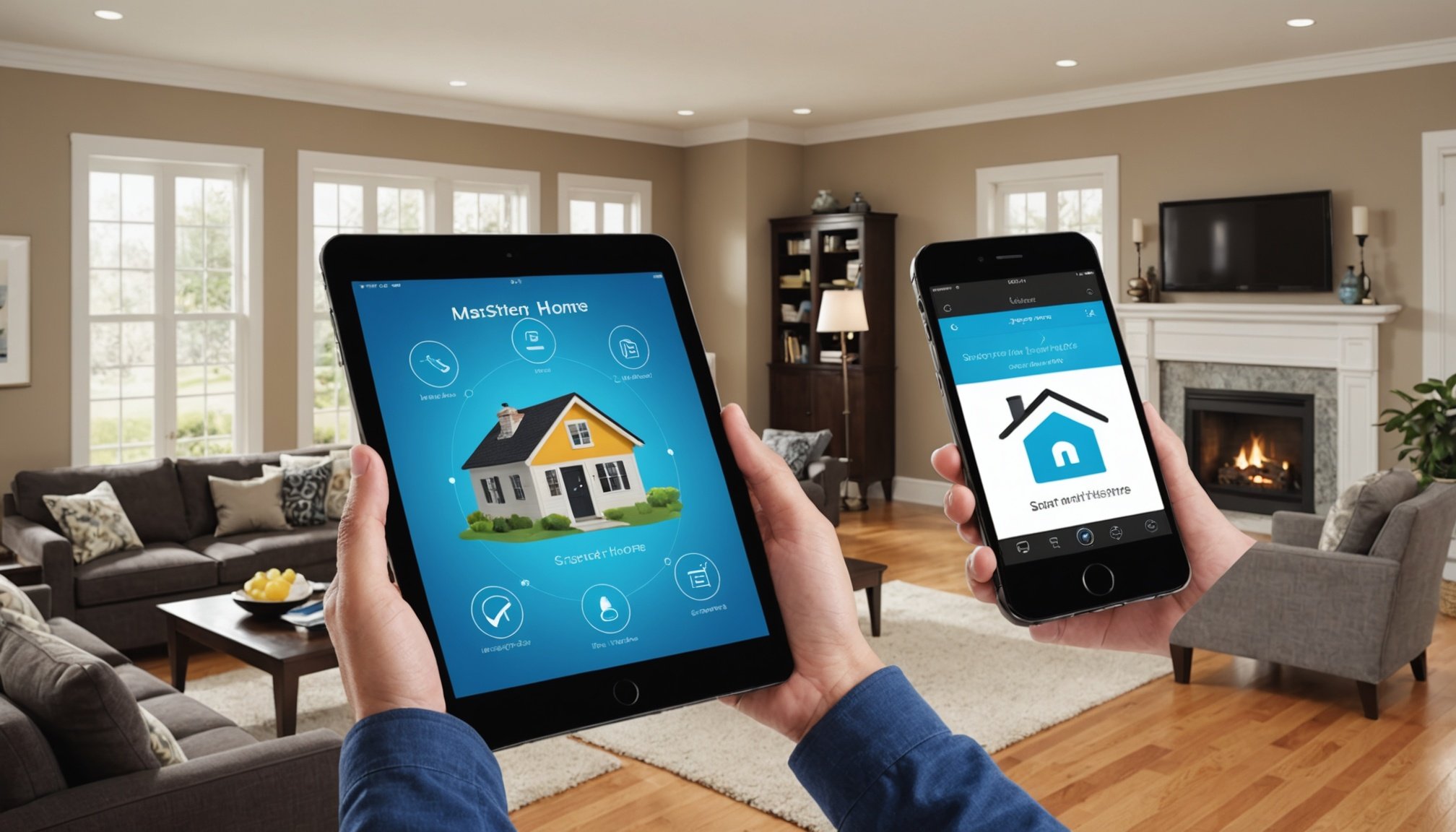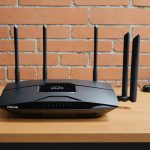Understanding Smart Home Technology
In our modern world, smart home technology offers a convenient and efficient way to manage household tasks. It encompasses a range of smart devices and systems that provide automation, making daily living more streamlined and enjoyable. These technologies include everything from smart thermostats and lighting to security systems and voice-activated assistants.
Home automation allows for remote control of various functions in your home, providing benefits such as energy savings, increased security, and enhanced comfort. For instance, smart thermostats can adjust the temperature based on your preferences and schedule, improving both energy efficiency and comfort. Similarly, smart lighting can create ambiance and save electricity by turning off when not needed.
In the same genre : Maximize Your Smart Plug Experience: The Ultimate Smartphone Setup Manual
Common types of smart devices found in households range from smart speakers like Google Home and Amazon Echo to connected appliances that can be operated through smartphone apps. These devices integrate seamlessly with your daily routines, offering the convenience of controlling multiple aspects of your home environment from a single source.
The growing adoption of these technologies demonstrates their practicality. Not only do they cater to tech-savvy individuals, but they also offer solutions for all users seeking increased control and ease of use in managing their home lives.
This might interest you : Maximize Your Smart Plug Experience: The Ultimate Smartphone Setup Manual
Setting Up Your Smart Home
Creating a smart home setup can transform your living space into a tech-enabled haven. A pivotal first step is to ensure device compatibility. This means checking that all the smart devices you wish to connect can communicate with each other. Look for a unifying hub or a compatible platform, such as Google Home or Amazon Alexa, to centralise control.
An effective installation guide includes strategic placement of devices for optimal function and connectivity. For instance, positioning your smart thermostat in a central area can help maintain even temperatures throughout the home. Place smart speakers in areas where voice commands will be frequently used, such as in the kitchen or living room.
Organisation is key in smart home setup. Group devices by rooms or functions within your smartphone app. Having a streamlined interface not only simplifies control but also enhances overall user experience and efficiency. Regularly update device software to maintain functionality and security.
Consider hardwiring essential devices for an uninterrupted connection, if possible. The ultimate goal is creating a cohesive ecosystem that integrates seamlessly with your lifestyle, enhancing convenience and functionality. Through thoughtful planning and execution, your smart home can evolve to meet your unique needs and preferences.
Integrating Smart Devices
Smart home technology relies on effective device integration, ensuring smooth communication between various systems. Selecting platforms like Google Home or Amazon Alexa can centralise control, streamlining management. Organising your smart home starts with choosing a popular smart home platform. These options often provide user-friendly interfaces and robust support for a wide variety of devices.
Popular Smart Home Platforms
Among leading platforms, Google Home and Amazon Alexa stand out. Both offer comprehensive ecosystems capable of managing diverse smart devices. Compatibility is key—these platforms frequently update to support new technology, ensuring seamless connectivity.
Role of Smartphone Applications
Essential tools in smart home setups, smartphone apps facilitate device management, allowing users to adjust settings on the go. These applications simplify device integration, offering real-time updates and adjustments. Pre-programmed scenes or routines can be set, transforming the way everyday tasks are performed.
Enhancing System Interoperability
Achieving seamless connectivity involves understanding system interoperability. Use apps designed to bridge gaps between different brands, making it easier to control everything from one place. Checking the fine print for compatibility notes when purchasing new devices can prevent integration issues later, ensuring a consistently smooth experience.
Troubleshooting Common Smart Home Issues
Encountering hiccups in your smart home technology can be frustrating. Common issues often include connectivity lapses, unresponsive devices, or incompatible systems, which can disrupt your routine. Smart home troubleshooting starts with elementary checks, such as verifying Wi-Fi connections and power sources. When diagnosing connectivity problems, ensure routers are placed centrally and not obstructed by thick walls or electronic interference.
If a device remains unresponsive, resetting it may resolve the issue. Most smart devices have a reset button or process to bring them back to factory settings. This can often solve deeper issues and is worth trying before escalating beyond basic troubleshooting.
Why is my smart device not responding? Several factors, such as software updates and connectivity challenges, can cause this. Check for updated firmware and ensure your device is compatible with the rest of your system.
When simpler solutions don’t suffice, professional help might be required. Electrical problems or sophisticated system integrations often need an expert eye. Develop a solid relationship with a local technician or service provider to ensure seamless assistance when needed. A proactive approach and regular maintenance can prevent major disruptions in your home automation journey.
Optimizing Smart Home Automation
Optimizing your smart home’s automation techniques can greatly enhance convenience and efficiency. Smart home optimization begins with understanding how to create efficient routines. These routines can be tailored to your lifestyle, such as setting lights to dim automatically in the evening or creating schedules for security cameras.
To maximise the benefits of smart home automation, consider implementing these strategies:
- Integration and Coordination: Ensure devices communicate effectively with one another. For instance, link your smart thermostat with motion sensors to adjust temperatures based on room occupancy.
- Energy Efficiency: Reduce energy consumption by automating lights and appliances to switch off when not in use.
- Custom Routines: Develop personalised routines that match your daily schedule. This might include automating morning tasks or setting a “goodnight” routine that secures and powers down your home.
A real-world example is using an automation platform to trigger cooking appliances when you enter the kitchen after work. Similarly, smart blinds can be set to close as the sun sets, enhancing privacy and comfort. By experimenting with different automation techniques, you can find what best suits your needs, ultimately creating a harmonious, user-friendly environment.
Comparative Analysis of Smart Home Solutions
Understanding smart home solutions is essential when making decisions about which products to incorporate into your home. By comparing popular options, you can assess features that fit your lifestyle and needs. Moreover, examining product comparisons provides insights into performance, ease of integration, and overall user satisfaction.
Product Comparisons
Many consumers often find themselves debating between key players like Google Nest, Amazon Alexa, and Apple HomeKit. Each offers distinctive smart home solutions. Google Nest tends to favour seamless smart device integration with its wide range of compatible products, while Amazon Alexa prides itself on its robust voice-command functions and extensive third-party app support. Apple HomeKit, known for its strong privacy controls, integrates naturally with iOS devices, making it a plausible consideration for Apple users.
Market Trends
Emerging market trends highlight an increase in energy-efficient and environmentally friendly features. Smart thermostats, like those from Ecobee or Nest, now focus extensively on reducing energy consumption. Meanwhile, lighting solutions that adapt to natural light levels exemplify the industry’s shift towards sustainability. Keeping an eye on these trends ensures you choose technology that adapts to future needs while providing immediate benefits.
Visual Aids for Smart Home Management
Smart home technology can be complex, yet the use of visual aids significantly simplifies the process for users. Visuals, such as diagrams and instructional screenshots, play a vital role in demonstrating device setup and ensuring efficient device integration.
Importance of Visual Aids
Imagine purchasing a new smart thermostat with no idea how to install it. A detailed diagram can guide you through each step, making the installation process less daunting. This clarity in visuals eliminates guesswork and reduces the potential for errors. Visual aids also aid in explaining complicated concepts, such as system interoperability or network layouts, providing a clearer understanding of how various components interact within a smart home setup.
Examples and Guidance
For instance, instructional screenshots can illustrate how to navigate a smart home app, allowing you to follow the interface step-by-step. Similarly, having a well-drafted diagram to showcase optimal device placement throughout your home can enhance connectivity and performance. Such visuals not only improve initial setup but also assist in ongoing maintenance and troubleshooting, making them indispensable resources in smart home management.
Whether you’re new to home automation or a seasoned user, visuals are crucial tools that simplify the procedure and boost confidence in managing your smart environment.
User Experiences and Case Studies
Incorporating smart home technology in real-life scenarios provides invaluable insights into its practical applications. User experiences often highlight the tangible benefits homeowners enjoy, such as enhanced convenience, energy savings, and improved security. For instance, integrating a series of smart devices can lead to a more seamless home automation experience.
Real-Life Examples
Consider a case where a busy family uses a combination of smart lights, thermostats, and voice-activated assistants. By linking these devices through a central platform, they create specific routines that suit their daily schedules. Lights adjust gradually in the mornings, and the thermostat maintains optimal temperatures based on occupancy. This tailored approach not only optimizes energy usage but also enhances day-to-day comfort.
Lessons Learned
Lessons from case studies emphasize the importance of device compatibility. Ensuring that all smart devices can communicate smoothly prevents disruptions in automation. Experienced users also advocate for regular firmware updates, which keep systems secure and functional. These firsthand accounts show that, when thoughtfully executed, smart home setups significantly enhance lifestyle quality, providing a harmonious balance between technology and personal needs.











